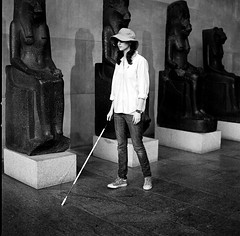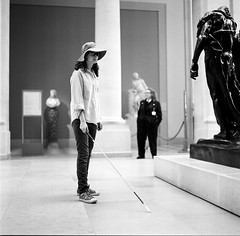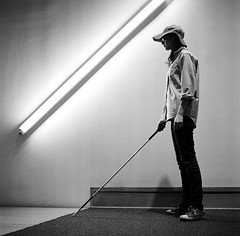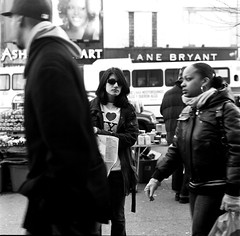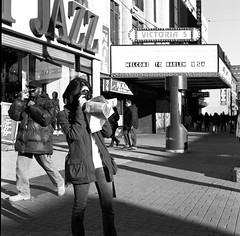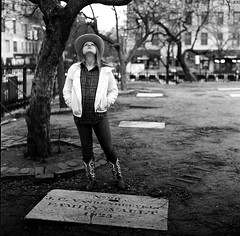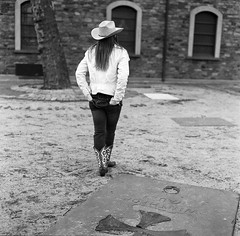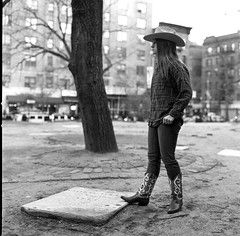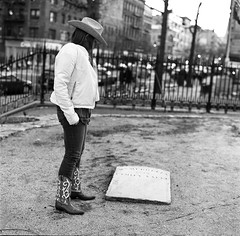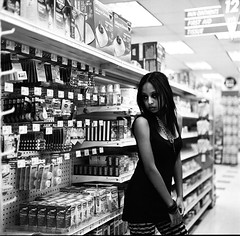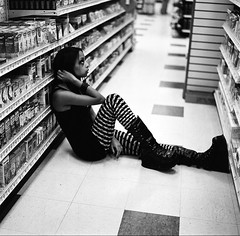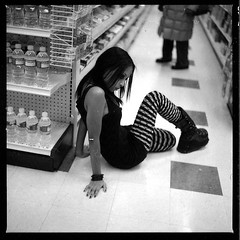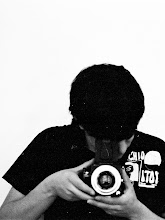Friday, February 29, 2008
Sunday, February 24, 2008
February 23 - Shoot with Sophie Blumberg
The Philosophy: As we move farther and farther away from the age of classical art, the world becomes less interested by it. Instead, we are turning our eyes towards MTV and YouTube as our main sources of culture. Even the greatest artists of the twentieth century are being ignored. For instance, most people recognize the name Picasso, but only a small portion of those people can name one of his paintings. And while modern art has succeeded in opening the doors of how artists express themselves, it has failed to draw from influences of the classical period. If we continue down this road, we will become blind to one of the most vital and fascinating parts of human history.
Posted by
Alex Remnick
at
1:37 PM
0
comments
![]()
Sunday, February 17, 2008
February 16 - Shoot with Nina Perlman
The Philosophy: While it is no longer manifested in segregated drinking fountains and "separate but equal" schools, White America is still racist. In todays world, racism is displayed more subtly, like the phenomenon of white flight and suburbanization, the censorship of rap music, and the general uneasiness when in a "black neighborhood," like the Bronx or Harlem. As a result, black culture has also become something of a spectacle. Rap and hip hop music has gained one of its biggest markets with white teenage suburbanites, and yet people seem to fall more and more out of touch with the blues. Jazz music has been all but forgotten, and the majority of those who play it are now white and classically trained. White spectators of this culture seem like tourists, who want to experience "blackness" but would never bring themselves to be an actual part of it.
On Saturday, I woke up at about 8:30 in the morning to be sure that I wasn't late. I would be visiting my friend in Greenwich the next day, so I needed to pack. I also had to overpack, to make sure that mom didn't call me out on forgetting anything--as I had done virtually every time I had tried to pack by myself. So I had plans. But on Saturday, at about 8:35 in the morning, I fell back asleep. So at 10:00, I called Nina and rescheduled our noon meeting to one. By the time I had showered, eaten breakfast, packed, overpacked, gotten dressed, and checked all my photo equipment, Nina was on her way over. I guess time flies when you oversleep.
I went upstairs to tell my dad that we were going. I explained that we were going to take some shots at the 125th street station and then head over to the Apollo for the majority of shooting.
"I want you to be careful," he said. "Harlem is still a dangerous neighborhood."
"Um, dad, have the words 'broad daylight' ever occurred to you?"
"Wouldn't be the first time."
I couldn't help but laugh at the grand irony of the conversation.
Nina was wearing boot cut jeans and an "I Love NY" t-shirt. She had brought with her four different pairs of sunglasses, her Holga camera, and a faux fur scarf. We agreed that while the costume was pretty funny, the icing on the cake would be a fold-up NYC Transit subway map. But of course, on the way to the 125th Street station, we forgot to pick one up. So we did the first photos at the station, with Nina accentuating her t-shirt and taking glamor shots of the neighborhood. (I couldn't help but imagine a clueless, southern, tourist family surveying the area for some "authentic African American food." Meanwhile the young boy of the family would point to graffiti exclaiming "look maw! Are we in a museum?")
We picked up the street map on the way to street level, when suddenly Nina and realized the same thing at almost the same instant. By attempting to look like and parody the stereotypical New York tourist, and by going to a place where we weren't exactly sure of the street plan, we had come uncomfortably close to being the tourists we were trying to lampoon. For instance, when we had trouble finding the Apollo theater at first, we both looked at each other and considered if it would be so wrong to pull out the map and check our location. How's that for another grand moment of irony?
We eventually did find the Apollo--not to mention a neighboring theater which conveniently had "Welcome to Halrlem, USA" written on the marquee. We shot by both of them. I also attempted to get the Hotel Theresa in frame. (I also learned that the correct pronunciation is "TE-ree-sah" and not "THE-ree-sah.") As per usual, we got the occasional stare, a couple people walked into frame, but for the most part, the shooting was mechanical. Also, like the two other shoots, it was freezing outside and I had been too stupid to bring gloves. It got so bad, that we decided to skip the fourth roll of film and just go home to a warm meal.
On the way back home, I had one last grand moment of irony. Thinking about the few, short hours Nina and I spent in Harlem, I couldn't help but wonder if I was a part of the problem as well. Did being white and well-off mean that I was inclined to show some of the same racism I was attempting to point a finger at. To be honest, this was the first time I had gone to Harlem when I wasn't with my parents or a class trip. And when my dad suggested that I should be careful in Harlem, I jumped down his throat, but I couldn't help but feel a little nervous when we were shooting. It was a chilling reminder of my work's proximity to my life. However much I try to escape and expose the customs and issues of Generation Y, I will never escape the fact that I am a part of it.
Posted by
Alex Remnick
at
9:24 PM
0
comments
![]()
Monday, February 11, 2008
From the First Two Shoots
It occurred to me that it would be a good idea to show some examples of my work from my first two photo shoots. My third shoot is this Saturday with Nina.
Note: If you wanna see these bigger, just click 'em.
Posted by
Alex Remnick
at
3:43 PM
0
comments
![]()
Wednesday, February 6, 2008
Checklist
- [ ] Bouquet of flowers
- [ ] Wedding band
- [x] Gas mask
- [ ] Birthday supplies
- [x] Cane a blind person would use
- [ ] Angelic cloak
- [x] Curlers
- [x] A handheld mirror
- [ ] Hat and trenchcoat
- [ ] Military boots
Posted by
Alex Remnick
at
8:47 PM
0
comments
![]()
Monday, February 4, 2008
Sick Day Thoughts
As I lay in bed, sick today, trying to figure out if, as my friend and subject Alee suggested, a girl dressed up like Jack Abramoff would look like Carmen Sandiego, there was a question that kept popping into my head. Well, two questions really. "Are enough people signed onto to model for this project?" and "Where are you going to find all the seemingly random stuff that this project requires?" The first question I'm not so worried about. As for the second one, I'm only two shoots into this project, and my laundry list of items I need to find already includes the following…
- Large bouquet of flowers
- Wedding band
- Gas mask
- "Bio-Hazzard" suit
- Birthday party supplies including a hat, streamers, balloons, and noisemaker
- Cane a blind person would use
- Angelic cloak
- Curlers
- A handheld mirror
Posted by
Alex Remnick
at
5:36 PM
0
comments
![]()
